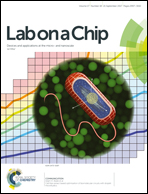Abstract
Directed migration of particles and molecules in a temperature gradient field, which is known as thermophoresis or the Soret effect, is of fundamental importance for mass transfer in colloid science and life sciences. However, thermophoretic tweezers that enable versatile particle manipulation have remained elusive due to the complex underlying physical forces in thermophoresis and the lack of general thermophilic particles above room temperature. Herein, we exploit entropic response and permittivity gradient at the particle–solvent interface to optically generated thermal gradient to achieve the thermophoretic trapping and dynamic manipulation of charged particles over an optothermal-responsive substrate. Engineering the interfacial properties, i.e., the surface charge of particles and the ionic strength of the solvent, further enhances the trapping efficiency. Through the rational design of optothermal potential profiles and substrate geometries, we have achieved various tweezing functionalities, including particle assembly, alignment, rotation and guiding, as well as precise transport of single nanoparticles. Based on the general concept of entropic change of polarized molecules structured at the particle–solvent interlayer, the thermophoretic tweezers are applicable to various types of particles, biological cells, and molecules and a wide range of solvents.



 Please wait while we load your content...
Please wait while we load your content...